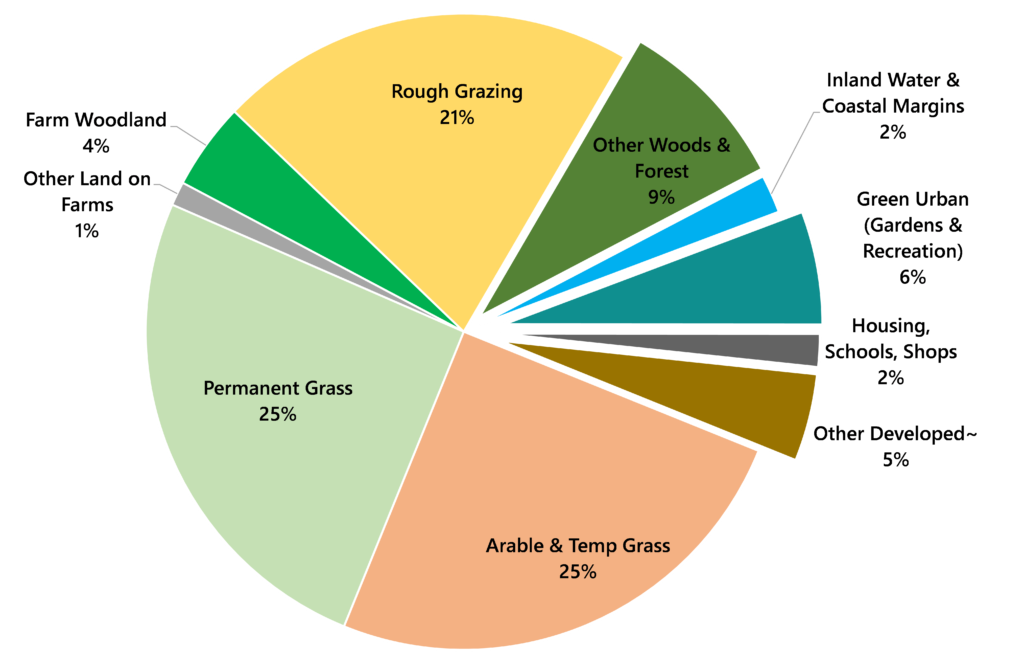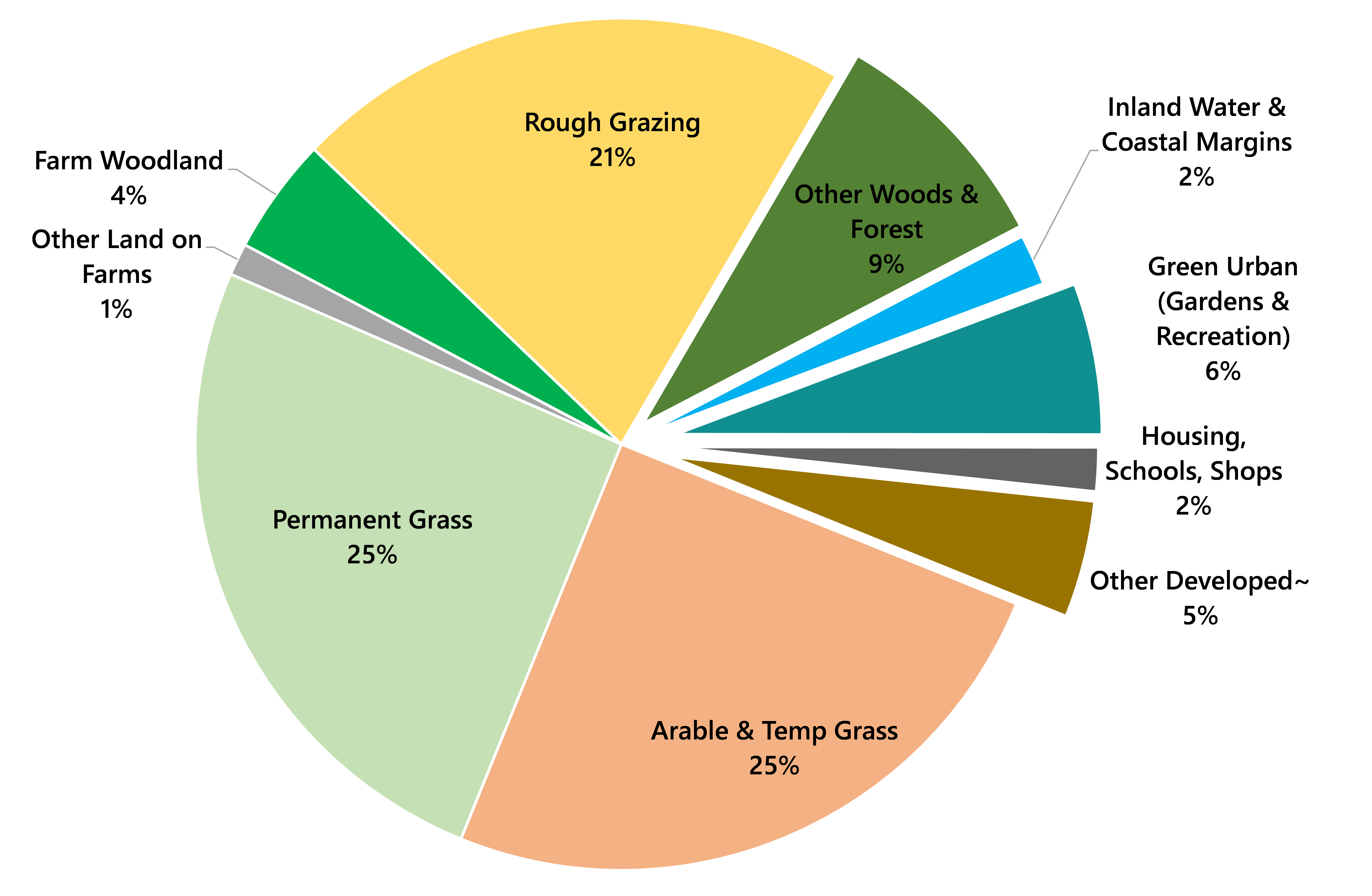The coming years will see ever-greater competition for the use of land in the UK. As the main occupiers of such a scarce resource, farmers will be presented with new opportunities to generate revenue. This is one of the messages from Andersons Spring Seminars that will be taking place in March.
Although it may not seem like it, the majority of the UK’s land area of just over 24m hectares (Ha) is still primarily used for agriculture. As the graphic below shows, over threequarters of the country (18.6 mHa) is still comprised of ‘farmland’.

Farmers have been using their land for more than food production for many years. This includes diversification and managing land for the environment – either as part of a scheme or simply because that is what they choose to do. However, new demands on land bring a wider range of options. Issues include;
- Rough Grazing: this has relatively low productivity in terms of agriculture and there will be pressure on this land to help address climate change – notably through increased tree planting and the regeneration of peatland. However, this land is often the most valued in terms of landscape and public access and balancing this with alternative land uses may be difficult.
- Carbon Farming: many people in agriculture are hoping that they can be paid for carbon reductions that they can generate through existing commercial farming. However, to demonstrate a permanent reduction in CO2, a permanent change in land use may be required. Again, this could be tree planting (e.g. Woodland Carbon Guarantee Scheme), or a shift from arable to grassland for example. There is also the question of the wisdom in selling ‘carbon credits’ when farming may need them itself to reach its net zero targets. Further land use change may come from areas being devoted to producing clean energy solar panels, energy crops etc.
- Nutrients: the amount of nitrates and phosphates in water is of concern in many catchments. Developments that might add to the nutrient load are often blocked by Planners. Farmers who reduce their own emissions can unlock these developments – for a price.
- Biodiversity: the Environment Act brings into law (in England) the concept of Biodiversity Net Gain. Developers may be looking for off-site biodiversity to meet their new legal requirements. Alongside this is the long-standing suite of agri-environmental schemes operated by the various UK Governments to improve the farmed environment. Lastly, at the extreme, we are increasingly seeing wealthy individuals or groups looking to access agricultural land to ‘re-wild’ it.
- Public Access: the Covid outbreak has reconnected many people with the British countryside. There may be opportunities for landowners to exploit this – perhaps not through the access itself, but supply services to those enjoying the countryside.
The difficult part for farmers is turning these opportunities (many of which are still in their infancy) into cash. The Government will be the buyer-of-last-resort for many of them through schemes such as Environmental Land Management. However, this may not be lucrative enough to replace declining income streams like the BPS. Private buyers of ‘land management’ may have deeper pockets and be more flexible in their requirements. Farmers may have to work harder to satisfy these customers than they would with Government schemes however.
Overall, farmers will need to adopt a more entrepreneurial mindset and see their land as a resource that can be maximised in a number of ways, rather than just through farming.
Andersons Spring Seminars are running at thirteen venues around Great Britain in March, looking at the prospects for UK agriculture in greater detail. For more information please go to www.theandersonscentre.co.uk/Seminars


















